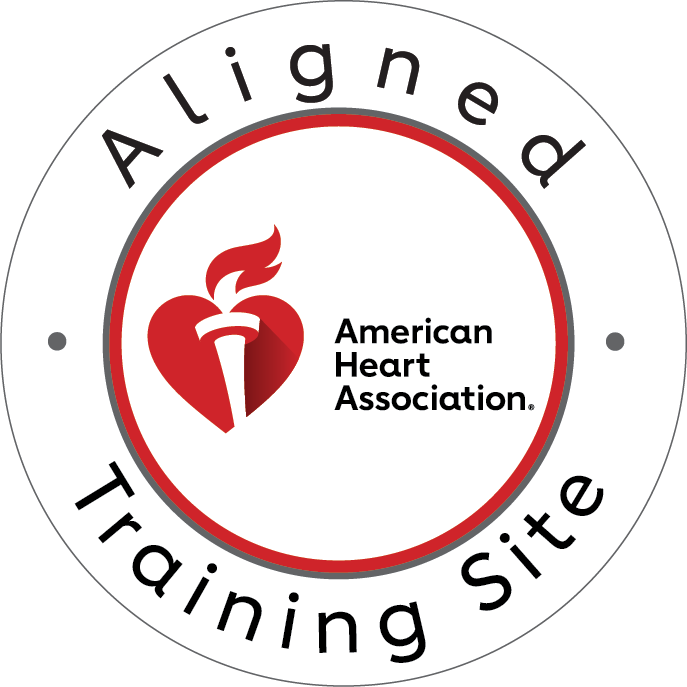Introduction
Choking incidents can happen unexpectedly and often result in dire consequences if not addressed promptly and effectively. Whether it’s a child swallowing a small object or an adult choking on food, the ability to respond swiftly can mean the difference between life and death. In such critical moments, having the knowledge and skills to administer CPR (Cardiopulmonary Resuscitation) can be invaluable.
Welcome to CPR Columbus, where we take pride in offering comprehensive CPR training that equips individuals with the confidence and ability to handle choking incidents and other life-threatening emergencies. As an American Heart Association training site, we are committed to providing top-notch instruction in Basic Life Support (BLS) for Healthcare Providers, Advanced Cardiovascular Life Support (ACLS), Pediatric Advanced Life Support (PALS), as well as CPR and First Aid courses.
In this article, we will delve into the significance of CPR training specifically for managing choking incidents. From understanding the nature of choking emergencies to learning the essential steps of CPR, we aim to empower our readers with the knowledge and skills necessary to intervene effectively in critical situations.
Understanding Choking Incidents
Choking incidents are frightening occurrences that can occur suddenly and without warning. They occur when an object becomes lodged in the throat, blocking the airway and preventing the flow of oxygen to the lungs. While choking can happen to anyone, it is particularly common among young children and the elderly.
The causes of choking incidents vary widely, ranging from swallowing large pieces of food to inhaling small objects or even experiencing a sudden medical emergency like a seizure. Regardless of the cause, choking requires immediate attention and intervention to prevent serious injury or death.
Without prompt action, a choking victim can quickly lose consciousness and suffer from irreversible brain damage within minutes. Therefore, it is crucial to recognize the signs and symptoms of choking and respond swiftly with appropriate measures.
Choking incidents manifest through a range of symptoms, including difficulty breathing, coughing, gagging, wheezing, and a panicked expression. In severe cases, the victim may be unable to speak, breathe, or cough effectively. As bystanders, it is essential to remain vigilant and attentive to these signs, as they indicate a potential choking emergency.
Importance of CPR Training
The link between CPR and choking incidents underscores the critical importance of CPR training in saving lives. While many people associate CPR primarily with cardiac arrest, the reality is that CPR techniques are equally vital in addressing choking emergencies.
During a choking incident, the blocked airway prevents oxygen from reaching the lungs, leading to oxygen deprivation and potentially fatal consequences. CPR training equips individuals with the knowledge and skills to intervene effectively in such situations, ensuring that the victim receives the oxygen they need to survive.
One of the primary objectives of CPR training is to teach participants how to recognize the signs of choking and respond promptly with appropriate measures. This includes performing abdominal thrusts (also known as the Heimlich maneuver) to dislodge the obstructing object and clear the airway.
In addition to addressing the immediate threat of choking, CPR training also prepares individuals to administer chest compressions and rescue breaths if the victim becomes unconscious and their heart stops beating. By initiating CPR promptly, bystanders can help maintain blood circulation and oxygen supply to vital organs until advanced medical help arrives.
Furthermore, CPR training instills confidence and empowers individuals to take decisive action in emergencies. It provides them with the skills and knowledge to remain calm under pressure, assess the situation accurately, and perform life-saving interventions effectively.
At CPR Columbus, we understand the critical role that CPR training plays in handling choking incidents, and other medical emergencies. Our courses are designed to provide participants with hands-on experience and practical skills that can make a difference when every second counts.
Overview of CPR Columbus Training
At CPR Columbus, we are dedicated to delivering high-quality CPR training that prepares individuals to handle choking incidents and other life-threatening emergencies with confidence and competence. As an American Heart Association (AHA) training site, we adhere to the latest guidelines and standards, ensuring that our courses are up-to-date and comprehensive.
Our training programs cover a wide range of certifications, including Basic Life Support (BLS) for Healthcare Providers, Advanced Cardiovascular Life Support (ACLS), Pediatric Advanced Life Support (PALS), as well as CPR and First Aid courses. Whether you’re a healthcare professional seeking recertification or a concerned citizen eager to learn life-saving skills, we have a course tailored to meet your needs.
What sets CPR Columbus apart is our commitment to providing a stress-free and hands-on learning experience. We understand that learning CPR can be daunting for some individuals, which is why our instructors strive to create a supportive and encouraging environment where participants feel comfortable asking questions, practicing skills, and gaining confidence.
Our classes are conducted by experienced instructors who are passionate about empowering others with life-saving knowledge. They combine engaging lectures with interactive demonstrations and practical exercises to ensure that participants acquire both the theoretical understanding and practical skills needed to respond effectively in real-life emergencies.
Furthermore, our training facility is equipped with state-of-the-art equipment and resources to facilitate learning and skill development. From CPR manikins to automated external defibrillators (AEDs), we provide participants with hands-on experience using the tools and techniques they may encounter in emergencies.
Whether you’re a healthcare professional, a teacher, a parent, or simply a concerned citizen, CPR training is a valuable investment that can make a difference in the lives of others. By enrolling in a CPR course at CPR Columbus, you can gain the knowledge, skills, and confidence to be a capable responder in choking incidents and other medical emergencies.
Key Components of CPR Training for Choking Incidents
Effective CPR training for handling choking incidents encompasses several essential components that equip individuals with the knowledge and skills necessary to intervene promptly and decisively in emergencies. At CPR Columbus, our courses are designed to cover these key components comprehensively, ensuring that participants are well-prepared to respond effectively to choking emergencies. Let’s explore these components in detail:
Recognition of Choking Signs and Symptoms: The first step in responding to a choking incident is recognizing the signs and symptoms. Participants learn to identify common indicators of choking, such as difficulty breathing, coughing, gagging, and wheezing. By understanding these signs, individuals can quickly assess the situation and initiate appropriate interventions.
Proper Steps for Choking Response: CPR training teaches participants the proper sequence of steps to take when encountering a choking victim. This includes assessing the victim’s condition, asking if they need assistance, and determining the severity of the obstruction. Participants learn how to perform abdominal thrusts (Heimlich maneuver) to dislodge the obstructing object and clear the airway effectively.
Hands-On Practice: Practical hands-on practice is a crucial aspect of CPR training at CPR Columbus. Participants have the opportunity to practice abdominal thrusts and other choking response techniques on CPR manikins under the guidance of experienced instructors. This hands-on experience allows individuals to develop muscle memory and confidence in performing life-saving interventions.
Use of Assistive Devices: In addition to manual techniques, participants also learn how to use assistive devices such as choking rescue vests and back blows to aid in the removal of obstructing objects. CPR Columbus provides training on the proper use of these devices, ensuring that participants are equipped with multiple strategies for managing choking incidents effectively.
Calling for Emergency Medical Assistance: CPR training emphasizes the importance of calling for emergency medical assistance promptly in choking emergencies. Participants learn when and how to activate the emergency response system and communicate vital information to dispatchers. This ensures that professional medical help is on the way while bystanders initiate life-saving interventions.
By mastering these key components of CPR training for choking incidents, participants can become confident and competent responders in emergencies. At CPR Columbus, our goal is to empower individuals with the knowledge and skills they need to save lives and make a difference in their communities. In the next section, we will delve deeper into the importance of calling for emergency medical assistance and the role it plays in ensuring positive outcomes in choking emergencies. Stay tuned to learn more about how you can become a prepared and proactive responder in choking incidents with CPR Columbus.
Importance of Calling for Emergency Medical Assistance
While CPR training equips individuals with the skills to intervene effectively in choking incidents, it’s essential to recognize the importance of calling for emergency medical assistance as part of the response protocol. Prompt activation of professional medical help is critical for ensuring the best possible outcomes for choking victims.
Swift Access to Advanced Care: While bystanders can initiate life-saving interventions such as abdominal thrusts and CPR, and professional medical assistance provides access to advanced care and specialized equipment that can further aid in the treatment of choking victims. Emergency medical responders are trained to assess the situation, provide advanced airway management, and administer additional interventions as needed to support the victim’s recovery.
Confirmation of Successful Intervention: Calling for emergency medical assistance allows trained professionals to confirm the effectiveness of the bystander’s interventions and provide reassurance that the victim is receiving appropriate care. In some cases, choking incidents may resolve spontaneously or with minimal intervention, but it’s essential to have professional medical personnel on standby to address any complications or lingering concerns.
Coordination of Resources: By activating the emergency response system, bystanders ensure that appropriate resources are mobilized promptly to the scene of the choking incident. This may include ambulances equipped with advanced life support equipment, paramedics trained in emergency medical care, and communication systems to coordinate response efforts effectively. Timely activation of these resources enhances the overall efficiency and effectiveness of the emergency response.
Legal and Ethical Obligations: In many jurisdictions, there are legal and ethical obligations to seek professional medical assistance in choking emergencies. Good Samaritan laws protect bystanders who assist in good faith, but they also emphasize the importance of acting prudently and responsibly to ensure the safety and well-being of the victim. Calling for emergency medical assistance demonstrates a commitment to fulfilling these obligations and seeking the best possible outcome for the choking victim.
At CPR Columbus, we emphasize the importance of calling for emergency medical assistance as an integral part of the response to choking incidents. Our training programs include guidance on when and how to activate the emergency response system, communicate effectively with dispatchers, and provide essential information to ensure a swift and coordinated medical response.
By combining CPR skills with the prompt activation of professional medical assistance, bystanders can maximize the chances of a positive outcome for choking victims. Together, these interventions form a comprehensive approach to choking response that prioritizes swift action, effective communication, and coordinated care. In the next section, we will explore real-life testimonials and success stories from individuals who have undergone CPR training at CPR Columbus. Join us as we learn from their experiences and celebrate the impact of life-saving skills in action.
Conclusion
In the critical moments of a choking emergency, swift and effective action can be the difference between life and death. CPR training equips individuals with the knowledge, skills, and confidence to respond decisively in these situations, potentially saving lives and preventing tragedies. At CPR Columbus, we are committed to providing high-quality CPR certification in Columbus that prepares individuals to handle choking incidents and other life-threatening emergencies with competence and compassion.
Through our comprehensive courses, participants learn to recognize the signs of choking, perform life-saving interventions such as abdominal thrusts, and coordinate with emergency medical services for timely assistance. Our hands-on approach ensures that participants gain practical experience and confidence in their ability to respond effectively in real-life situations.
As evidenced by the testimonials and success stories shared by individuals who have undergone CPR certification training in Columbus with us, these life-saving skills have a profound impact on the lives of both rescuers and victims. Whether you’re a healthcare professional, a parent, a teacher, or simply a concerned citizen, CPR certification training in Columbus is a valuable investment that can make a significant difference in your community.
We invite you to join us in our mission to create safer communities and empower individuals to be prepared, proactive, and confident responders in choking emergencies and other medical crises. Together, we can make a difference and save lives.
Contact CPR Columbus today to learn more about our CPR certification in Columbus and how you can become a life-saving hero in your community. Remember, when it comes to choking incidents, every second counts—be prepared, be confident, and be ready to take action.
Thank you for reading, and we look forward to having you join us on this life-saving journey.




